Shrubs and bushes with purple flowers are popular among gardeners and people that love flowers. Not just because of their special colors that have associated with royalty, purple flowering plants also work well in color schemes.
There are many varied uses of shrubs. You can use them to create a beautiful privacy row in your backyard, or for your flowerbed. Either way, purple flowering shrubs make fantastic statements to your garden.
Fortunately, there are plenty of shades of purple flowers that you can plant so it adds a pop of color to your garden.
Scroll through to know the list of bushes with purple flowers that are sure will add some elegance to your home!
15 Gorgeous Shrubs and Bushes With Purple Flowers
1. Purple Bell Heather (Erica cinerea)
Well known for their beautiful dark-purple bell-shaped drooping flowers, these shrubs are evergreen, low maintenance, and suitable for coastal and rock gardens as they will tolerate the salt spray and love acidic soil conditions.
Sun Exposure: Full sun to part sun
Soil Needs: Acidic soil, well-drained.
Bloom Time: Summer to fall.
Hardiness Zones: 6-8 (USDA)
Toxicity: Toxic
Image source: Lightwater
2. Lavender (Lavendula spp.)
This beautiful bluish-purple flower is famous for its fragrance and medical properties that can do wonders for stress relief. Not just makes a stunning addition to borders, lavender also great for potpourri and floral arrangements.
This famous aromatic herb is native to Europe and has many varieties and the most common type is English lavender, French lavender, Spanish lavender, and Lavandin.
Besides being beautiful and attract butterflies, lavender flowers are also edible and repel mosquitos.
Sun Exposure: Full sun
Soil Needs: Well-drained
Bloom Time: Summer
Hardiness Zones: 5-9 (USDA)
Toxicity: Nontoxic
Image source: The Old Farmer’s Almanac
3. Lilac Bush (Syringa vulgaris)
Their attractive light-purple flowers and sweet fragrances are what made lilac bushes very known to many people. These flowers not just good to attract butterflies, they also often planted in rows along property borders.
Even though lilacs are easy to grow and low maintenance shrubs, their flowers just bloom for 2 weeks from mid-to-late spring. So they’re not an ideal option for those looking for year-round interest. But they still great for people who love purple flowers.
Sun Exposure: Full sun
Soil Needs: Well-drained, humus-rich soil.
Bloom Time: Spring
Hardiness Zones: 3-7 (USDA)
Toxicity: Nontoxic
Image source: The Spruce
4. Butterfly Bush (Buddleia davidii)
If you want to attract butterflies and watch them flit from bloom to bloom, these bushes may be the perfect plant for you.
Sun Exposure: Full sun
Soil Needs: Moist, well-drained
Bloom Time: Summer to fall
Hardiness Zones: 5-9 (USDA)
Toxicity: Nontoxic
Image source: Gardener’s Path
5. Royal Purple Hydrangea (Hydrangea macrophylla)
Hydrangea is a very popular plant in many settings that stay in bloom for the majority of the growing season. Though their stunning appearance may seem high maintenance, hydrangea is actually easy to grow. You won’t regret including this striking purple flowering shrub in your landscape.
Sun Exposure: Part shade to full sun
Soil Needs: Medium moisture, well-drained
Bloom Time: Summer to fall
Hardiness Zones: 6-9 (USDA)
Toxicity: Toxic
Image source: Gilmour
6. Russian Sage (Perovskia atriplicifolia)
If you’re looking for a plant that you can stick in the ground, forget about it and it still looks stunning even months after you grew them, then you need to put Russian sage in your top list.
These low maintenance and showy, tubular flowers are also drought-tolerant shrub, deer resistant, and attract butterflies, bees, and hummingbirds.
Sun Exposure: Full sun
Soil Needs: Well-drained
Bloom Time: Mid-summer to fall
Hardiness Zones: 5-10 (USDA)
Toxicity: Nontoxic
Image source: HGTV
7. Purple Queen Bougainvillea
Native to South America, this fast-growing plant is perfect to grow against a fence or building, as a bonsai or ground cover, in a pot, and on a trellis.
If you live in a temperate climate and looking to spice up your yard with an almost year-round floral fiesta, Bougainvillea is the answer! This plant also can be grown as indoor plants.
Sun Exposure: Full sun
Soil Needs: Well-drained
Bloom Time: Spring to fall
Hardiness Zones: 9-11 (USDA)
Toxicity: Mildy toxic to pets
Image source: Joy Us Garden
8. Rhododendron
Prized for their showy cluster of blooms, no wonders that they will brighten up your shady corners of the garden. These spectacular woody shrubs available in a wide variety of colors, the most common colors are purple and pink. One of the most popular varieties is a hybrid known as the P.J.M rhododendron.
Sun Exposure: Part shade to full shade
Soil Needs: Moist, well-drained, and acidic
Bloom Time: Spring
Hardiness Zones: 4-9 (USDA)
Toxicity: All parts of the plant are toxic to pets
Image source: Garden Manage
9. Spirea (Spiraea japonica)
Although this beautiful shrub is native to Japan, spirea is very common in American landscapes. Their colorful flowers and attractive foliage make this purple flowering shrub a showpiece in the landscape, so no wonder they become a garden favorite.
Sun Exposure: Full sun
Soil Needs: Moist, well-drained
Bloom Time: Late spring to mid-summer
Hardiness Zones: 4-8 (USDA)
Toxicity: Nontoxic
Image source: Rob’s Plants
10. Crape Myrtle (Lagerstroemia indica)
Whether you are looking for an eye-catching specimen or a vibrant blossom hedge, crape myrtles (or crepe myrtles) can be a stunning addition to your yard. These long-blooming bushes are hardy and low maintenance, even those who think they kill everything they plant should have success growing these heat-tolerant shrubs.
Crape myrtles also grow well above ground planters and containers.
Sun Exposure: Full sun
Soil Needs: Moist, well-drained
Bloom Time: Summer
Hardiness Zones: 6-9 (USDA)
Toxicity: Nontoxic
Image source: Southern Living Plants
11. Wisteria
If you want a high-climbing vine with large, cascading clusters of beautiful bluish-purple flowers and blooms vigorously in springs, wisteria is the best plant. Even though these purple flowering shrubs look perfect hanging from a pergola or archway and loved by many gardeners, this vine is considered invasive. So it better not to plant them near to your home.
Sun Exposure: Full sun to part shade
Soil Needs: Well-drained
Bloom Time: Spring to early summer
Hardiness Zones: 3-9 (USDA)
Toxicity: All parts of the plant are toxic to pets and human
Image source: Garden Beast
12. Heliotrope (Heliotropium arborescens)
These tender shrubby perennials came from the Greek word “helios” which means sun, and “tropos” turn, which derived from its habit of turning to face the sun.
Not just perfect for bedding plants, these low-maintenance delicate purple flowers that smell like cherry pie also great indoor and grown as houseplants.
Sun Exposure: Full sun
Soil Needs: Moist, well-drained
Bloom Time: Summer to fall
Hardiness Zones: 9-11 (USDA)
Toxicity: Highly toxic to pets. Can also be toxic to humans if consumed in large quantities.
Image source: Gardener’s Path
13. Fine Wine Weigela (Weigela florida)
Native to Asia, these old-fashioned beauty shrubs, with trumpet-shaped flowers are hardy in many regions of the US. These bushes with purple flowers are attractive to butterflies and hummingbirds to your garden and also deer-resistant.
Sun Exposure: Full sun to partial shade
Soil Needs: Moist, well-drained
Bloom Time: Late spring to early summer
Hardiness Zones: 4-8 (USDA)
Toxicity: Nontoxic
Image source: HGTV
14. Rose of Sharon (Hibiscus syriacus)
With their colorful, striking blooms, these purple flowering shrubs absolutely will light up your landscape and impress the passerby. Used as a hedge plant and foundation shrub, rose of sharon bush is tolerant of a wide range of conditions, including heat, humidity, air pollution, poor soil, and drought.
Sun Exposure: Full sun to partial shade
Soil Needs: Moist, well-drained
Bloom Time: Late summer to early spring
Hardiness Zones: 5-9 (USDA)
Toxicity: Nontoxic
Image source: Proven Winners
15. Purple Bush Clematis
This is not your usual clematis! If you already have one clematis or familiar with the vines clematis that becomes the most popular vines for landscapes and called “Queen of the Climbers”, then you need to consider this shrub clematis.
These flower blooms with large, deep purple flowers with intriguing yellow center highlights are absolutely gorgeous. They are great for border plants, specimens, or containers.
Sun Exposure: Partial shade to full sun
Soil Needs: Moist, well-drained
Bloom Time: Summer
Hardiness Zones: 5-9 (USDA)
Toxicity: Nontoxic
Image source: Proven Winners

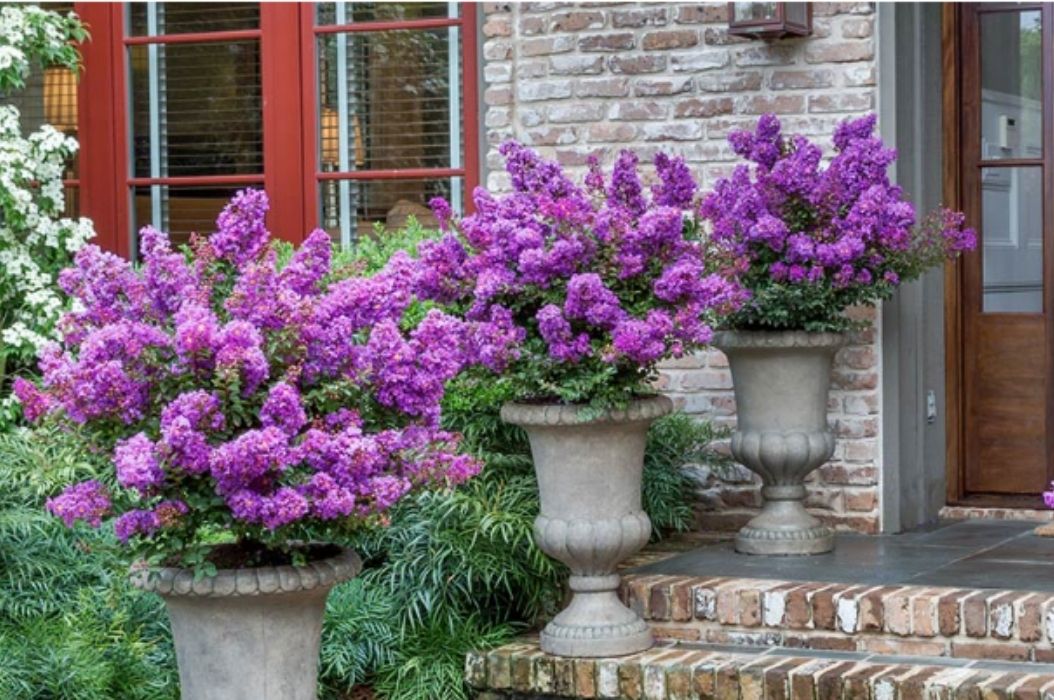
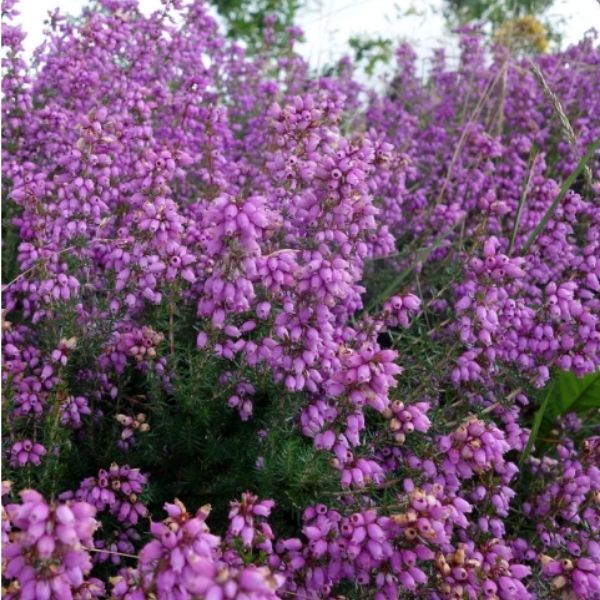

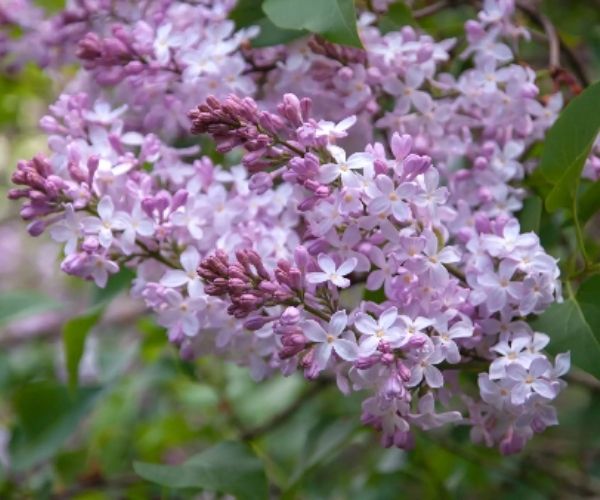
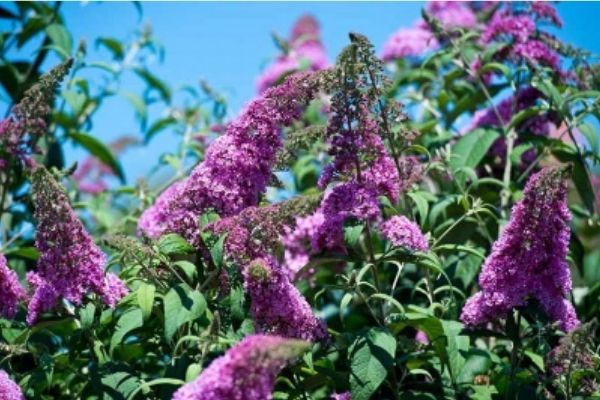

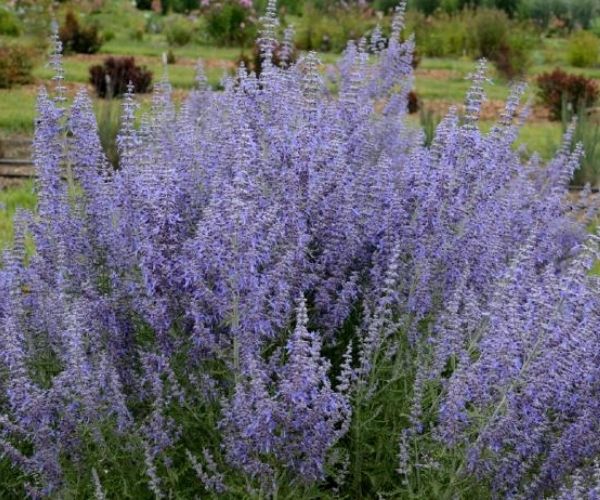
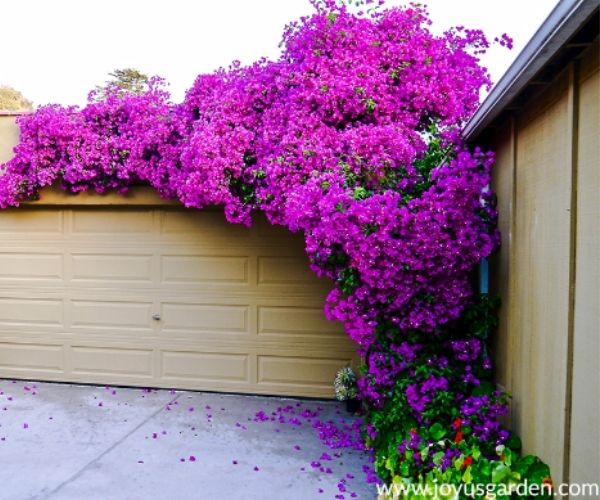

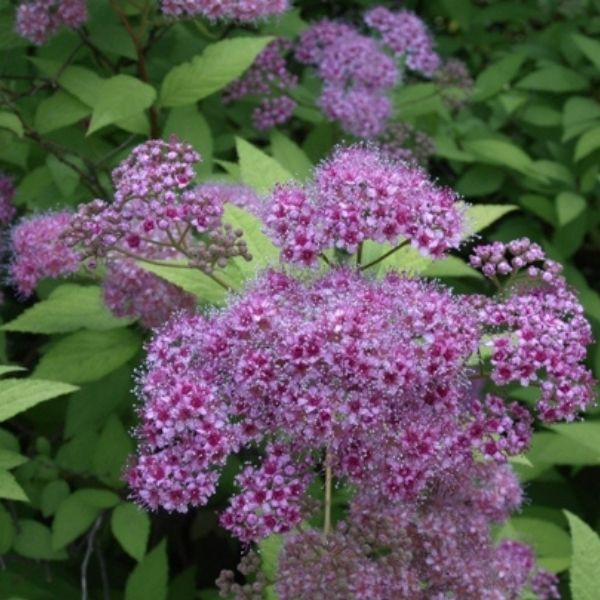
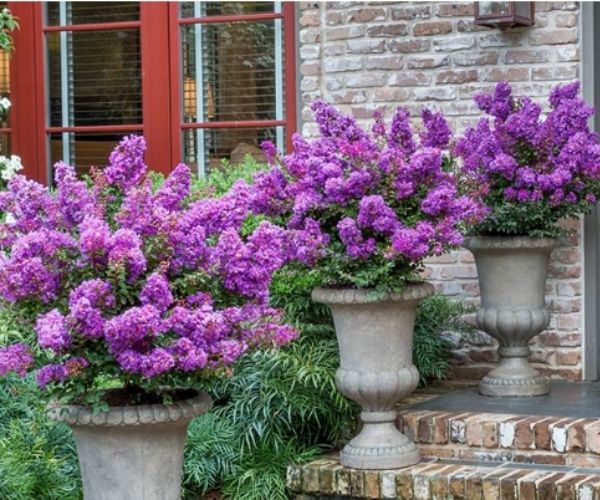

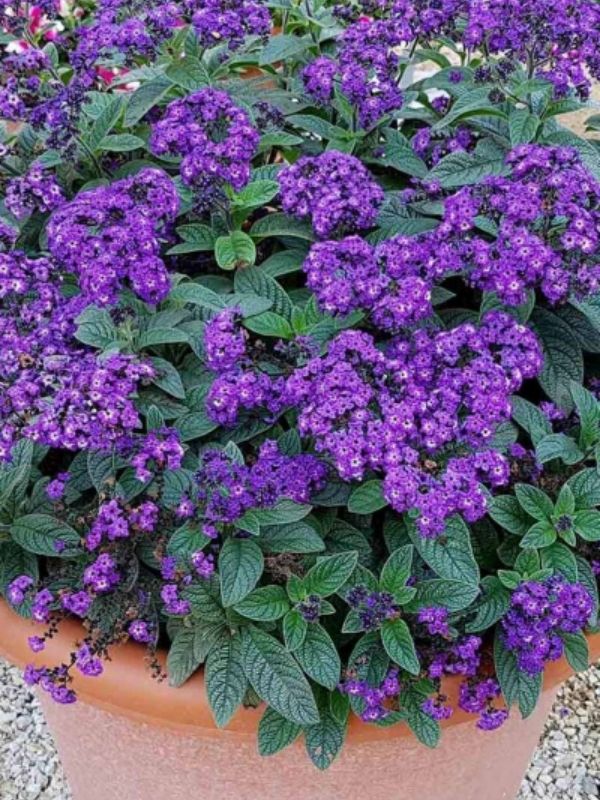
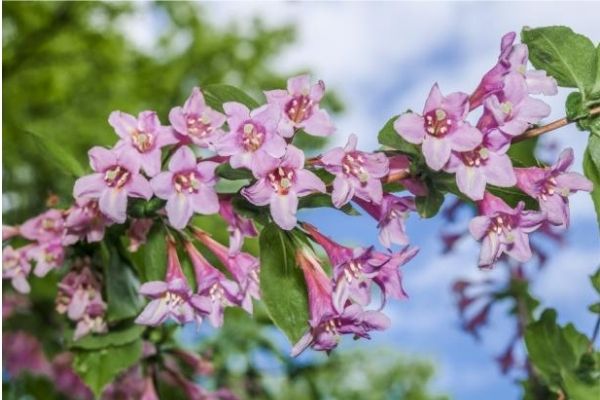
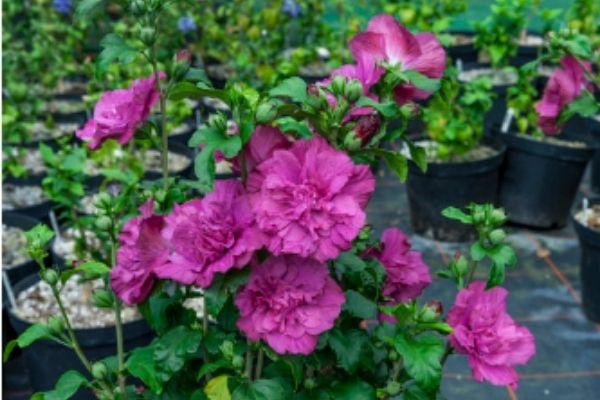
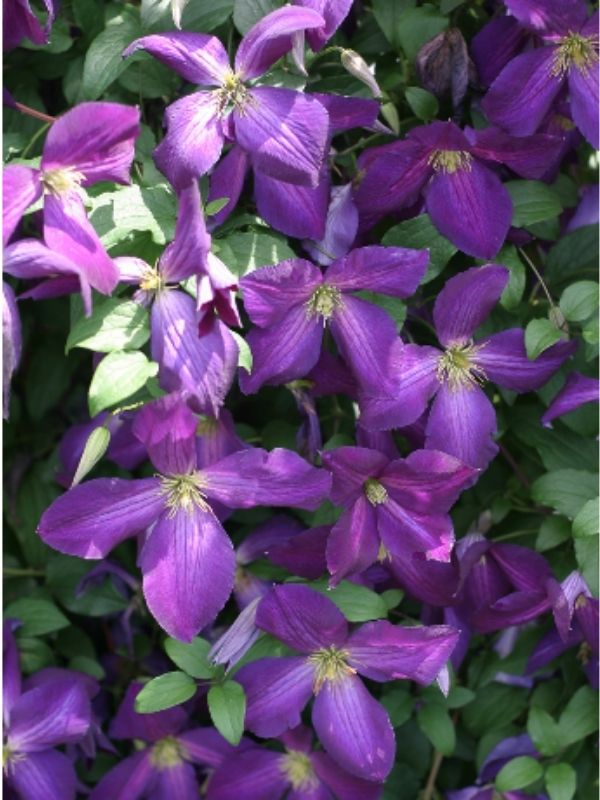


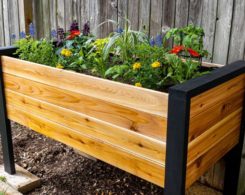

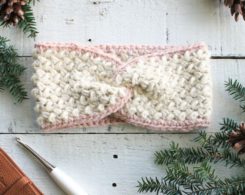
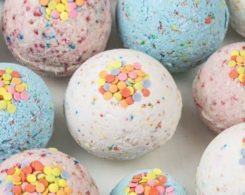
Leave a Reply